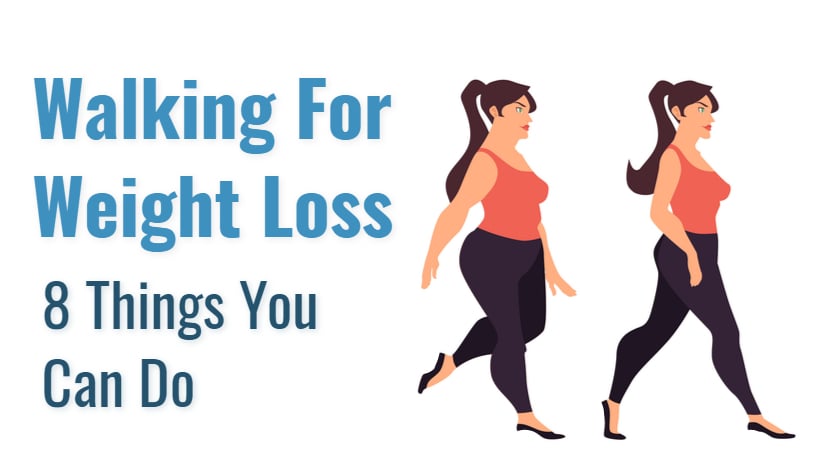Walking regularly is one of the easiest and most affordable forms of exercise. Doctors across the board agree the inactivity can have serious negative affects on your health. Research has shown that walking can help people lose weight and burn fat.
Here are some helpful tips to help you improve your walk and burn more calories while doing so:
Hydrate!
First things first, always be sure to hydrate before heading out for a long walk, or any form of exercise for that matter. Extensive research has shown the benefits of staying hydrated throughout the day, but there are also many benefits to drinking up before heading out for your workout.
One review found that dehydration reduces performance in activities lasting longer than 30 minutes. Try to drink about two cups of water around an hour before your walk so your body has time to absorb that H20 (and you have time to use the bathroom beforehand).
It’s equally important to remember to rehydrate your body when you return from your walk. The American Council on Exercise recommends consuming at least 8 ounces of water within 30 minutes after exercise.
Throughout the course of the day, you can also help keep your body hydrated by consuming a variety of fluids and foods, including juices, soda, smoothies, tea, lemonade, soups, fruits and vegetables.
Doing shorter walks throughout the day
Although long distance walks are always good for your health, there are also many benefits from taking frequent, short walks. Many people may find doing shorter walks throughout the day is an easier exercise routine to maintain on a daily basis instead of carving out time for longer, time-consuming walks once a day. Taking short, brisk 15-minute walks at least 4 times a day can burn as many calories as a long walk.
Many experts also believe that taking a walk after each meal can also bring health benefits. According to one study on inactive people over 60 years old, walking for 15 minutes three times a day after meals can help control blood sugar levels better than walking once a day for 45 minutes.
Focus on form
When it comes to walking, it is important to maintain form and posture. According to Medical News Today, a person should walk so that they are looking straight ahead at all times; keeping your chin up and your back straight can help increase your speed as well as lengthen your stride. Remember to keep your core activated and your shoulders square. Additionally, your glutes should be engaged with every step. Good Housekeeping recommends trying to think about tucking your butt inward; try to aim to land on your heels and to push off of your toes with each stride.
Pick up the pace
Just as with all forms of aerobic exercise, pace makes a big difference. Research shows that people burn more calories walking at a brisk pace as opposed to a slow speed.
A study published in Medicine & Science in Sports and Exercise showed that when people increased their pace to a run, they burned more calories. This study also showed that the group of runners weighed less overall than the walkers, suggesting that speed directly affects the number of calories a person burns while exercising.
But picking up your pace does not necessarily mean you need to run. Instead, walking briskly will burn extra calories to help with weight loss.
Wear weights
Adding extra weight to a workout will burn more calories. Research shows that adding weight to your walk can encourage your body to work harder and increase your heart rate.
One study concluded that individuals who walked at 2.5 miles per hour (mph) on a flat surface while wearing a weighted vest that weighed 15% of their weight, burned 12% more calories than a person who did not wear a vest. And a person wearing a weighted vest that represented 10% of their body weight and who walked at the same pace on a 5-10% gradient burned an average of 13% more calories.
Terry Downey, a physical therapist at Harvard-affiliated Spaulding Rehabilitation Network, recommends avoiding wearing ankle or wrist weights or carrying weights in your hands during your walk, as these practices can lead to muscle imbalance and injury. Instead, opt for a weighted vest. According to Harvard Health, weighted vests can help put pressure on your bones to stimulate the growth of new bone cells, which helps fight bone loss. Downey recommends wearing a vest that does not exceed 10% of your body weight for a safe and beneficial walk.
Walk at an incline
Research suggests that increasing the incline on your walk can enhance the intensity of the workout while also reducing the impact on your legs and joints. If you enjoy indoor workouts, this may mean increasing your treadmill gradient; for those who enjoy the outdoors, you may want to incorporate more hills into your route. Try to aim to walk up hills, stairs, or inclines two to three times a week.
Incorporate resistance training into your routine
To help burn more calories and increase the growth of new muscle, a person can try adding in resistance training during their walk. Short exercise intervals that include squats, pushups, burpees, squat thrusts, and lunges are good ways to change up your routine as well as increase your heart rate and build muscle.
Strive for more steps
Try to set goals each week to gradually increase your number of steps. Fitness apps and pedometers are good tools to help you reach these goals and encourage you to aim high. Research has shown that aiming for 10,000 steps each day—roughly 5 miles of walking—is the ideal distance people should consistently strive for in order to lose weight. But even if you can’t reach 10,000 steps a day, you should still set a reasonable goal for yourself and work to achieve that. Incorporating more walks throughout your day, whether it’s walking from the parking lot or taking the stairs instead of the elevator, can help you reach your step goals.



